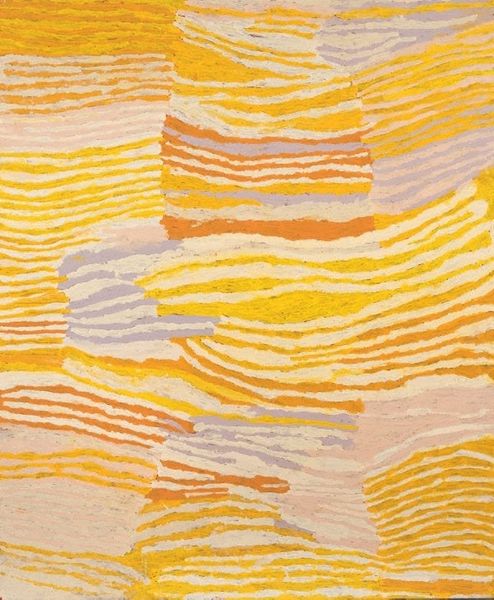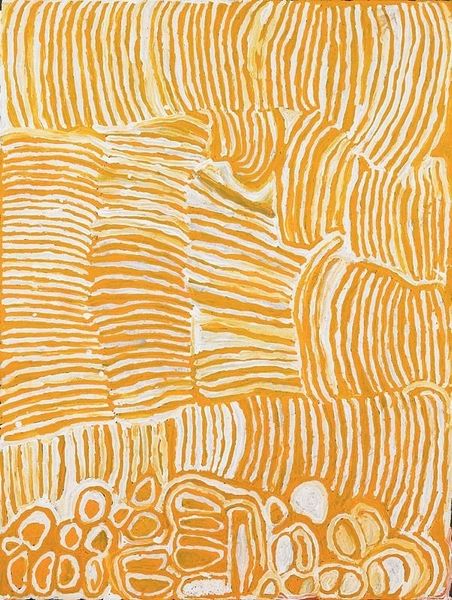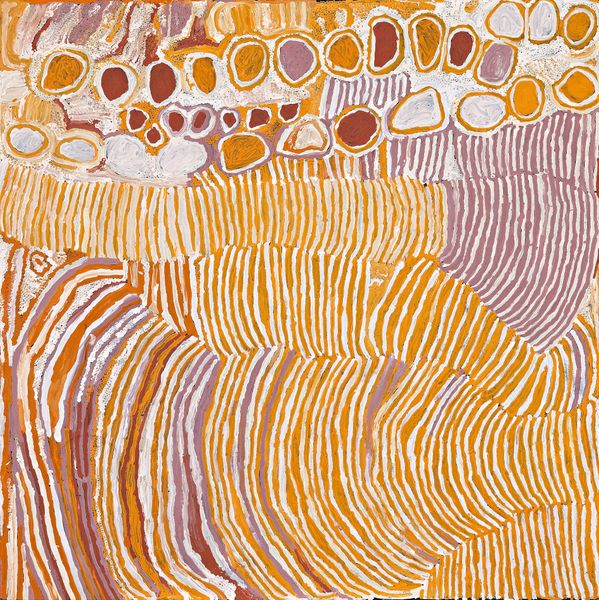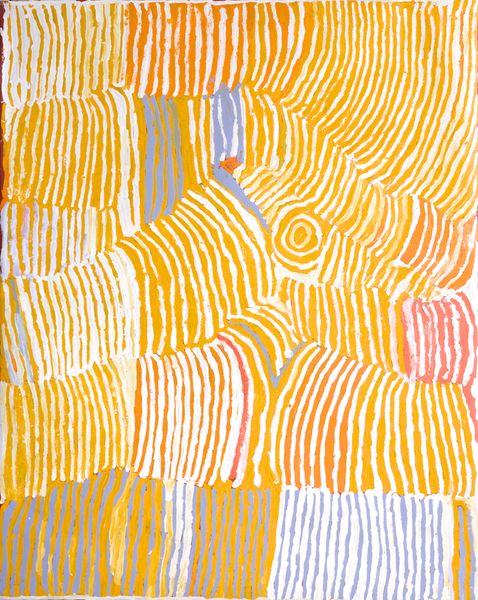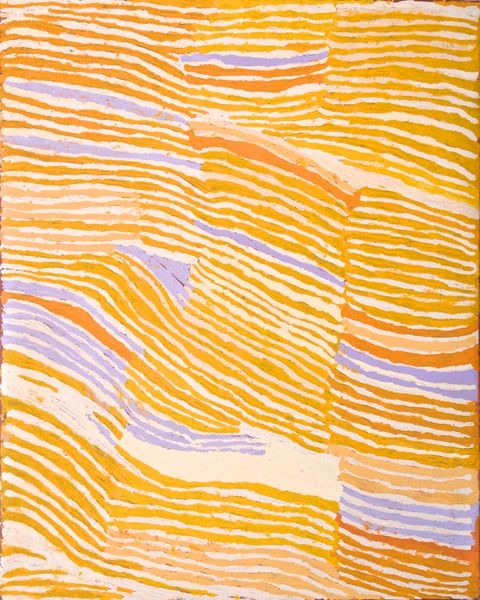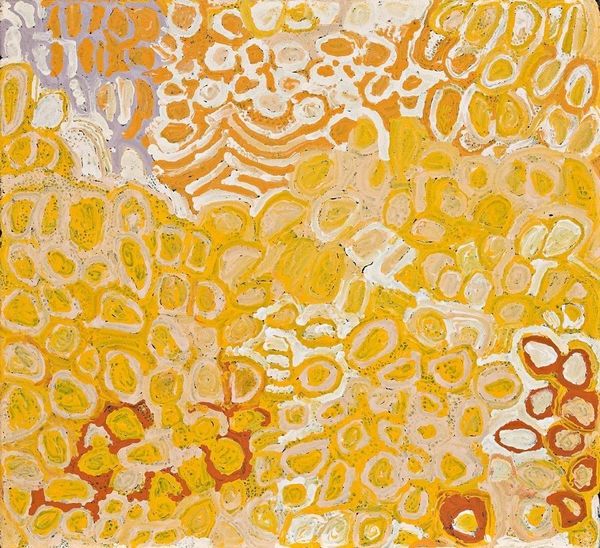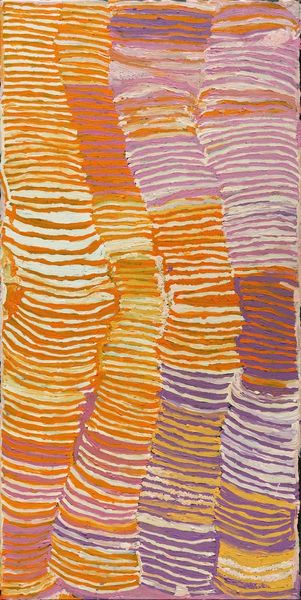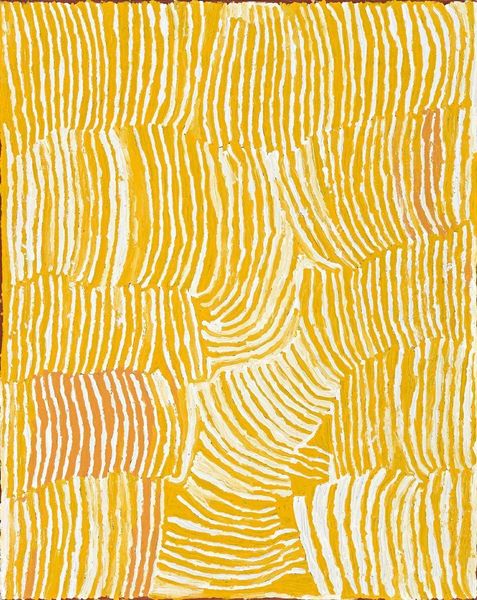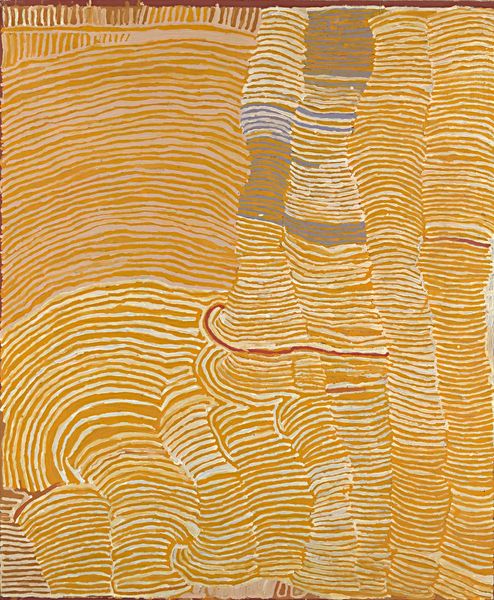
painting
#
contemporary
#
organic
#
painting
#
geometric pattern
#
organic pattern
#
abstraction
Copyright: Makinti Napanangka,Fair Use
Editor: We're looking at "Kungka Kutjarra (Two Women)," an acrylic painting by Makinti Napanangka from 2000. It's comprised of geometric and organic patterns in orange, white, and purple. Initially, the swirling patterns give it a vibrant, almost dizzying effect. How do you interpret this work? Curator: This piece speaks volumes about the intersection of art, identity, and the reclamation of Indigenous narratives. Considering Napanangka's cultural context is essential. What story do you think she's communicating? What socio-political factors may have influenced her creation? Editor: It feels like a landscape but also perhaps an echo of oral traditions being passed on... something ancient. Curator: Exactly. Napanangka belonged to the Pintupi language group. Her paintings often represent Country and its relationship to ancestral narratives. Consider the ongoing struggle for Indigenous land rights and self-determination. Can this painting also serve as an act of resistance? Editor: It could be interpreted as a claiming or a mapping of cultural heritage? A powerful statement of continued existence? Curator: Precisely. The painting challenges dominant Western art historical perspectives and inserts Indigenous voices into contemporary dialogue. We must examine these works with respect and an awareness of historical injustices. It encourages crucial conversations surrounding cultural preservation, representation, and the power of art to shape social change. Editor: So, understanding the painting really demands an understanding of the artist's historical context. I definitely have a broader view now. Curator: I'm glad we've looked at it through an activist lens!
Comments
No comments
Be the first to comment and join the conversation on the ultimate creative platform.
